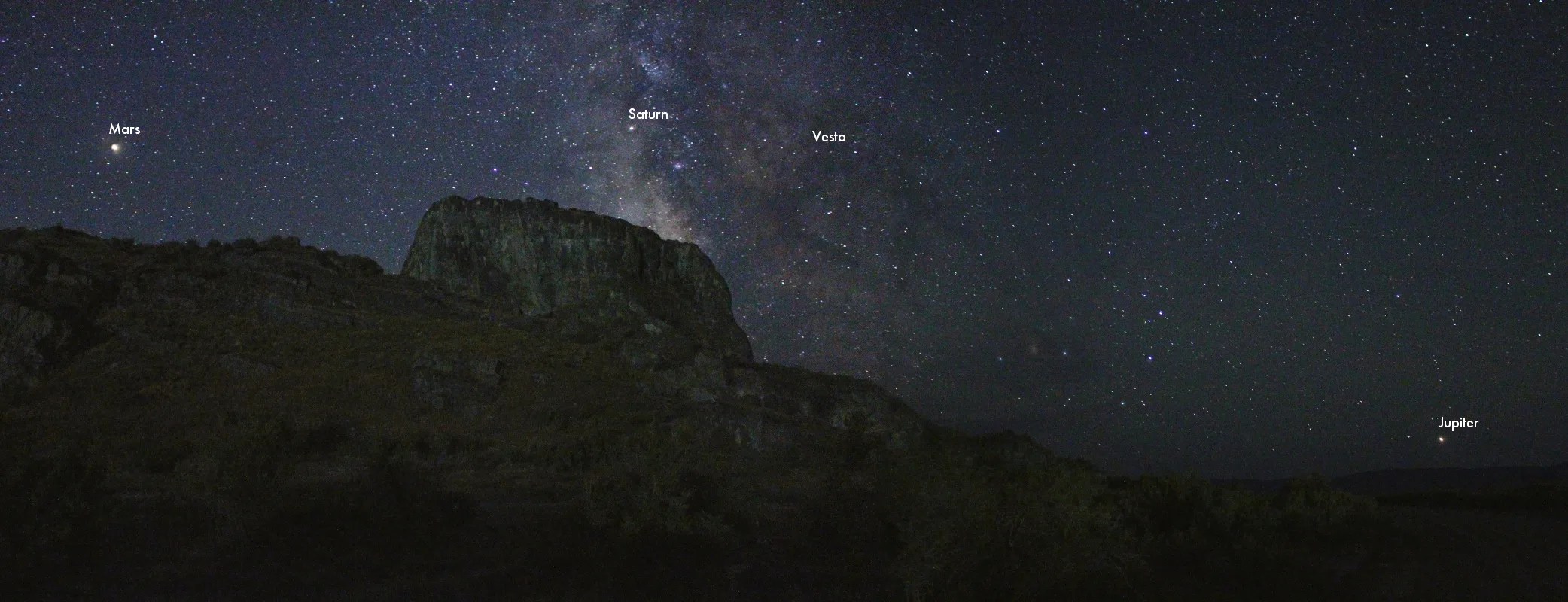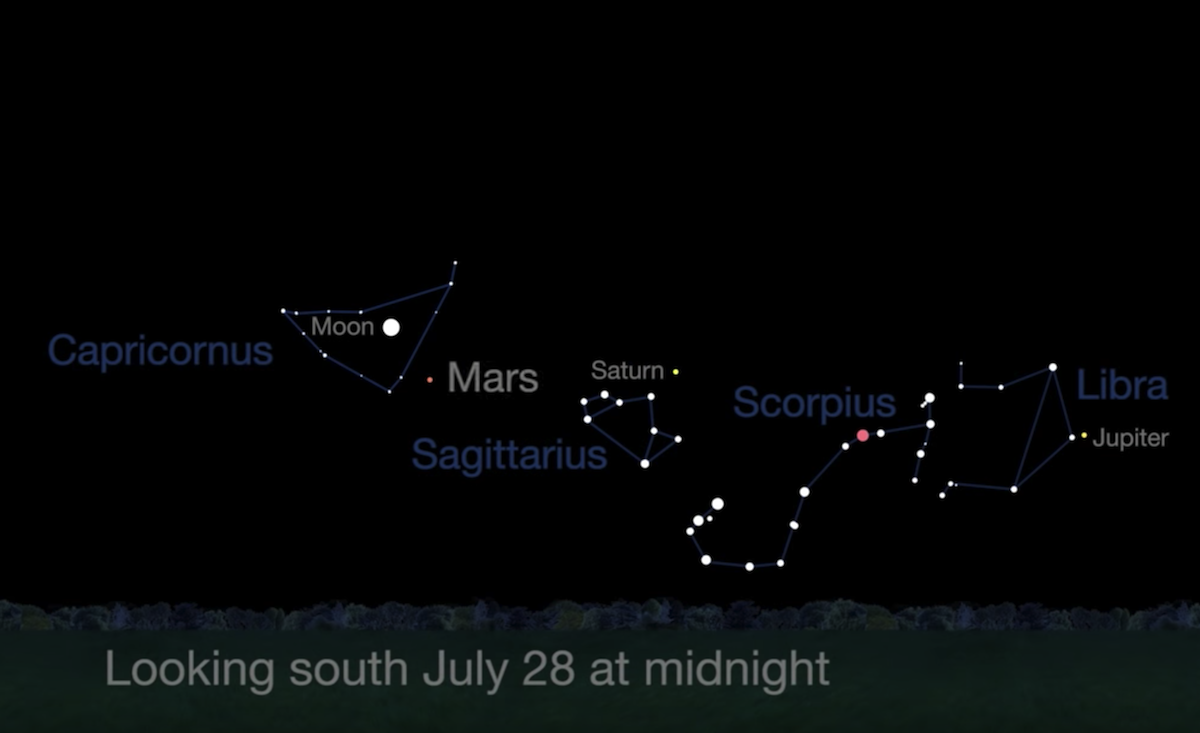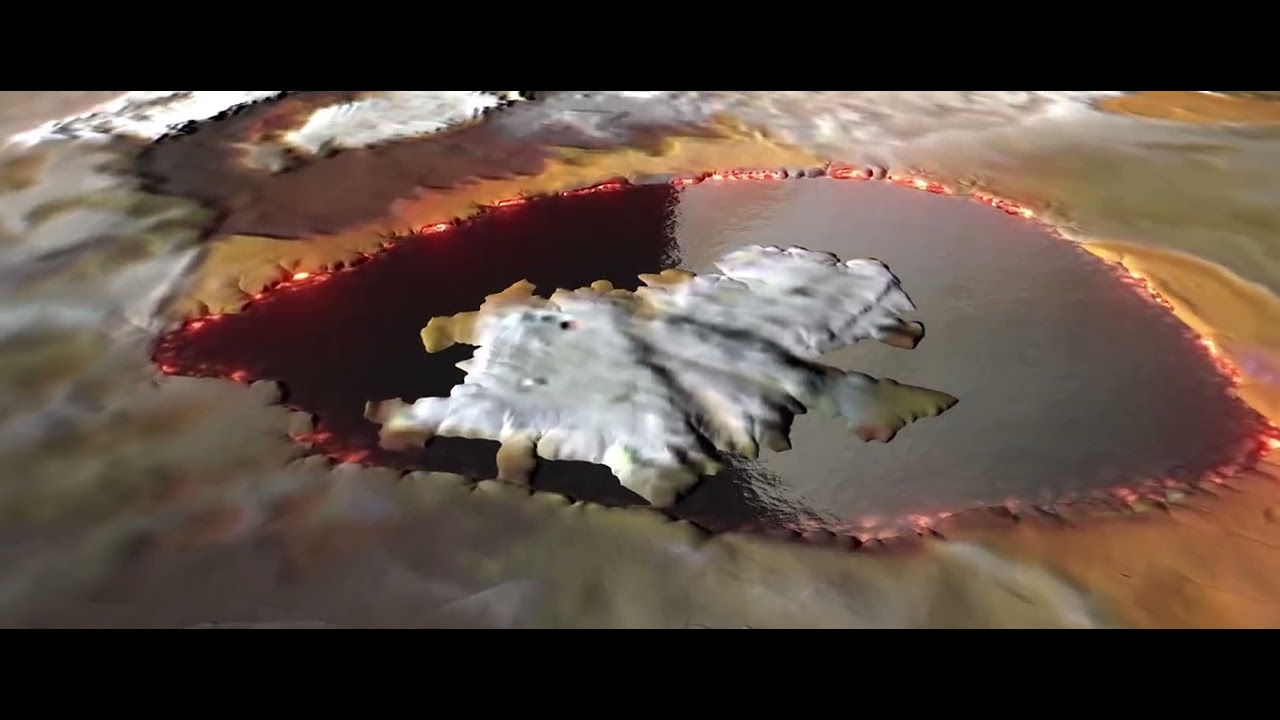2 min read

This summer's night sky offers an embarassment of riches to skywatchers—with or without a telescope.
Mars reaches opposition on July 27, when Earth, Mars and the Sun are lined up, with Earth directly in the middle. What's more, on July 31 Mars makes its closest approach to Earth as both orbit the Sun. All this means that now is the time to catch the Red Planet glowing brightly with its unmistakable coppery color. A telescope should reveal some surface features, although a planet-wide dust storm is currently raging across the Martian surface, masking details that would otherwise be visible.

Near Saturn, the brightest asteroid right now—Vesta—can be seen for the next several months, even with the unaided eye. A star chart will come in handy when looking for the asteroid among the nearby stars.
See more sky watching tips in the latest What's Up? videos.







